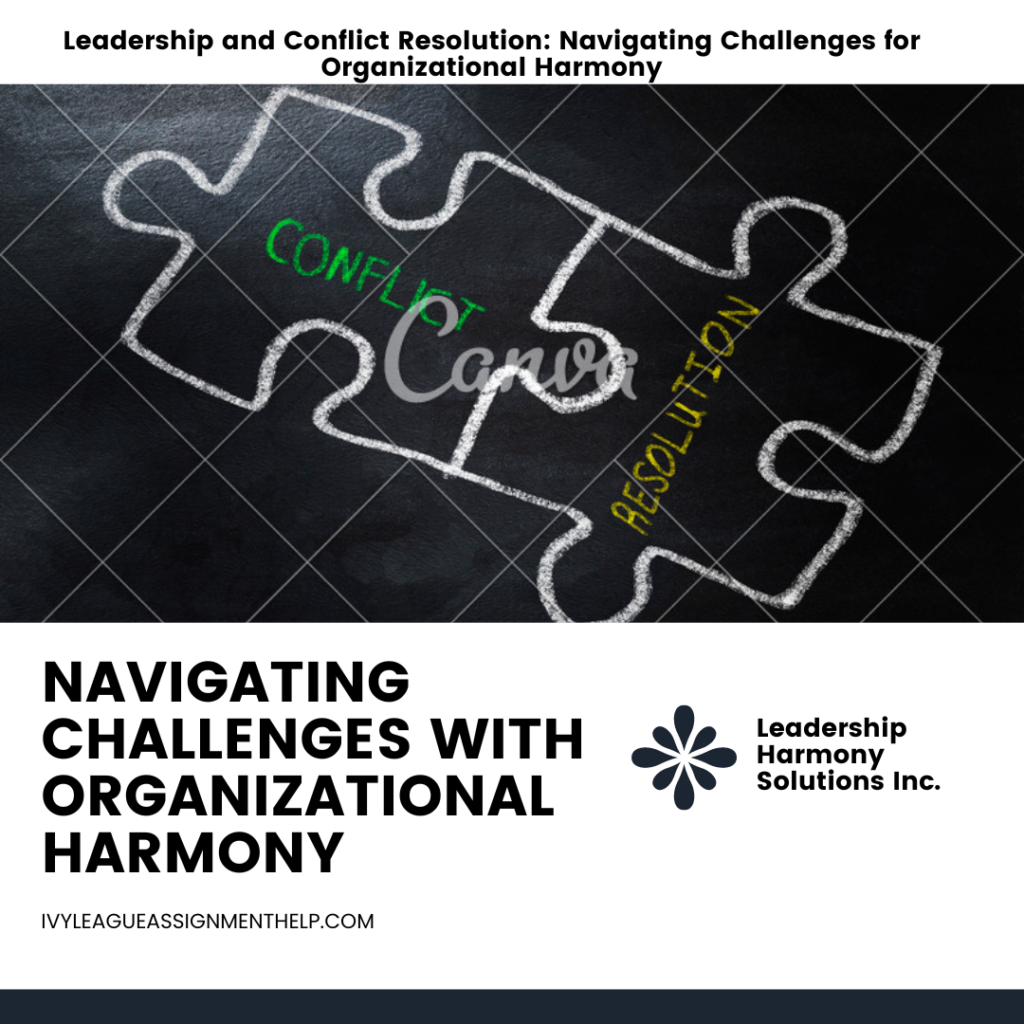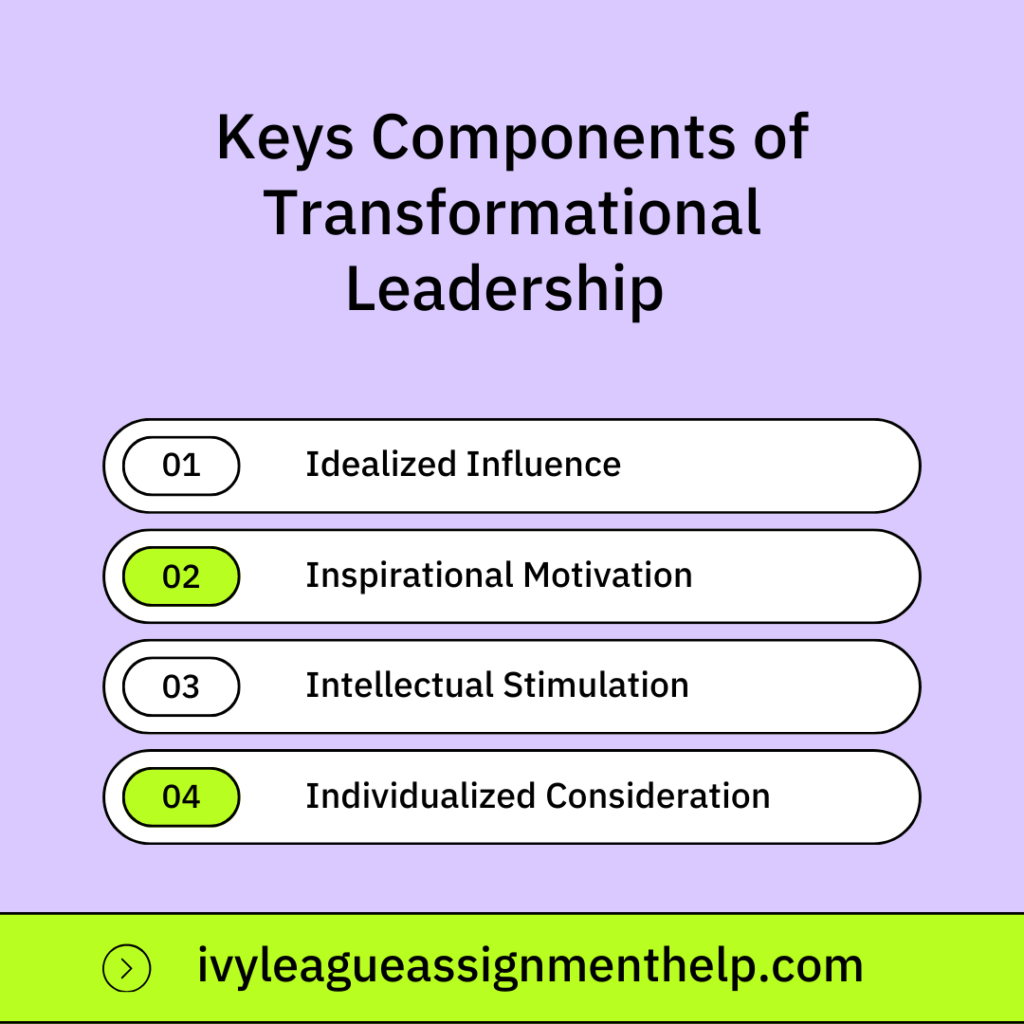Introduction
Leadership and conflict resolution are critical aspects of organizational success. Effective leaders possess the skills to manage and resolve conflicts, fostering a harmonious work environment that promotes collaboration and productivity. At ivyleagueassignmenthelp.com we help and guide students to delves into the relationship between leadership and conflict resolution, key strategies for handling conflicts, and real-world examples of successful conflict resolution in leadership.

Understanding Leadership and Conflict Resolution
Leadership involves guiding and influencing others towards achieving common goals, while conflict resolution refers to the methods and processes involved in facilitating the peaceful ending of conflict. Effective conflict resolution is vital for maintaining team cohesion, enhancing communication, and ensuring a positive organizational culture.
The Role of Leadership in Conflict Resolution
Leaders play a crucial role in conflict resolution by setting the tone for how conflicts are handled within the organization. They must be proactive in identifying potential conflicts, mediating disputes, and implementing strategies to prevent future conflicts. Leaders must also model appropriate behavior, demonstrating fairness, empathy, and effective communication.
Key Skills for Leadership in Conflict Resolution
Active Listening
Active listening involves fully concentrating, understanding, responding, and remembering what is being said. Leaders who practice active listening can better understand the perspectives and concerns of all parties involved in a conflict.
Empathy
Empathy allows leaders to understand and share the feelings of others. This skill helps leaders to build trust and rapport with their team, making it easier to resolve conflicts amicably.
Problem-Solving
Effective conflict resolution requires strong problem-solving skills. Leaders must be able to identify the root cause of conflicts, generate potential solutions, and implement the best course of action.
Communication
Clear and transparent communication is essential in conflict resolution. Leaders must articulate their thoughts and intentions clearly, ensuring that all parties understand the issues and proposed solutions.
Patience and Composure
Remaining patient and composed during conflicts is crucial. Leaders who stay calm under pressure can think more clearly and make better decisions, which helps to de-escalate tense situations.
Negotiation
Negotiation involves finding a mutually acceptable solution to a conflict. Leaders must be skilled negotiators, able to balance the needs and interests of all parties to reach a fair resolution.
Strategies for Effective Conflict Resolution
Address Conflicts Early
Addressing conflicts early prevents them from escalating into more significant issues. Leaders should be vigilant in recognizing early signs of conflict and intervene promptly.
Establish Clear Policies and Procedures
Having clear policies and procedures for conflict resolution helps to ensure consistency and fairness. Leaders should develop and communicate these guidelines to all team members.
Encourage Open Communication
Fostering an environment where team members feel comfortable voicing their concerns can prevent conflicts from festering. Leaders should promote open and honest communication within the team.
Focus on Interests, Not Positions
In conflicts, parties often focus on their positions rather than their underlying interests. Leaders should encourage a shift in focus to the interests and needs of all parties to find common ground.
Facilitate Collaborative Problem-Solving
Collaborative problem-solving involves working together to generate solutions that satisfy everyone involved. Leaders should guide the team through this process, ensuring that all voices are heard.
Use Mediation
Mediation involves a neutral third party who helps facilitate a resolution. Leaders can act as mediators or bring in external mediators to assist in resolving particularly challenging conflicts.
Follow-Up
Following up after a conflict has been resolved is important to ensure that the solution is effective and that no residual issues remain. Leaders should check in with the involved parties to ensure continued harmony.
The Impact of Effective Conflict Resolution on Organizational Success
Enhanced Team Cohesion
Effective conflict resolution strengthens team cohesion by fostering trust and mutual respect among team members. Leaders who resolve conflicts constructively build a more unified and collaborative team.
Improved Communication
Resolving conflicts improves overall communication within the team. Leaders who promote open dialogue and transparency help to create a culture where team members feel heard and valued.
Increased Productivity
By addressing and resolving conflicts promptly, leaders can minimize disruptions and maintain focus on organizational goals. This leads to increased productivity and efficiency.
Positive Organizational Culture
Effective conflict resolution contributes to a positive organizational culture. Leaders who handle conflicts fairly and empathetically set a tone of respect and professionalism, which permeates the organization.
Higher Employee Satisfaction
Employees who work in an environment where conflicts are managed well are more satisfied and engaged. This leads to higher morale, lower turnover, and a more committed workforce.
Case Studies of Successful Conflict Resolution in Leadership
Satya Nadella and Microsoft
Satya Nadella’s leadership at Microsoft involved transforming the company’s culture to one of empathy and collaboration. By addressing conflicts openly and fostering a growth mindset, Nadella resolved internal tensions and drove innovation.
Howard Schultz and Starbucks
Howard Schultz’s return to Starbucks involved resolving conflicts related to the company’s direction and employee relations. Schultz focused on transparent communication and employee engagement, which restored trust and revitalized the brand.
Nelson Mandela and South Africa
Nelson Mandela’s leadership in post-apartheid South Africa is a profound example of conflict resolution. Mandela’s emphasis on reconciliation, dialogue, and forgiveness helped to heal a divided nation and build a foundation for a democratic society.
Comparative Analysis of Leadership Styles in Conflict Resolution
| Leadership Style | Characteristics | Impact on Conflict Resolution |
|---|---|---|
| Transformational | Inspirational, visionary, motivates change | Encourages collaborative resolution, fosters long-term harmony |
| Transactional | Focus on tasks, rewards, and penalties | Provides clear structure, may resolve surface issues but not underlying causes |
| Servant Leadership | Focus on serving others, empathy, and collaboration | Builds trust, addresses conflicts empathetically and holistically |
| Autocratic | Centralized decision-making, strict control | Quick decisions, may suppress conflicts rather than resolve them |
| Laissez-Faire | Hands-off, minimal intervention | High autonomy, potential for unresolved conflicts due to lack of intervention |
FAQs
Why is conflict resolution important in leadership?
Conflict resolution is important in leadership because it maintains team cohesion, enhances communication, and fosters a positive work environment. Effective conflict resolution prevents disruptions and drives organizational success.
What are key skills for leaders in conflict resolution?
Key skills for leaders in conflict resolution include active listening, empathy, problem-solving, communication, patience and composure, and negotiation. These skills help leaders manage and resolve conflicts constructively.
How can leaders effectively resolve conflicts?
Leaders can effectively resolve conflicts by addressing them early, establishing clear policies, encouraging open communication, focusing on interests rather than positions, facilitating collaborative problem-solving, using mediation, and following up to ensure resolution.
What is the impact of effective conflict resolution on organizational success?
Effective conflict resolution enhances team cohesion, improves communication, increases productivity, fosters a positive organizational culture, and leads to higher employee satisfaction. These factors contribute to overall organizational success.
Can you provide examples of successful conflict resolution in leadership?
Examples of successful conflict resolution in leadership include Satya Nadella at Microsoft, Howard Schultz at Starbucks, and Nelson Mandela in post-apartheid South Africa. These leaders resolved conflicts constructively, fostering unity and driving success.
What are the different leadership styles and their impact on conflict resolution?
Different leadership styles impact conflict resolution in various ways. Transformational leadership encourages collaborative resolution, transactional leadership provides clear structure, servant leadership builds trust and addresses conflicts holistically, autocratic leadership makes quick decisions but may suppress conflicts, and laissez-faire leadership offers autonomy but may lead to unresolved conflicts due to lack of intervention.
Conclusion
Leadership and conflict resolution are vital components of a successful organization. Effective leaders possess the skills and strategies to manage and resolve conflicts, fostering a harmonious and productive work environment. By understanding the key elements of conflict resolution, implementing effective strategies, and learning from real-world examples, leaders can navigate challenges and drive organizational success. The synergy between leadership and conflict resolution creates a dynamic and resilient organization where individuals and teams thrive.

